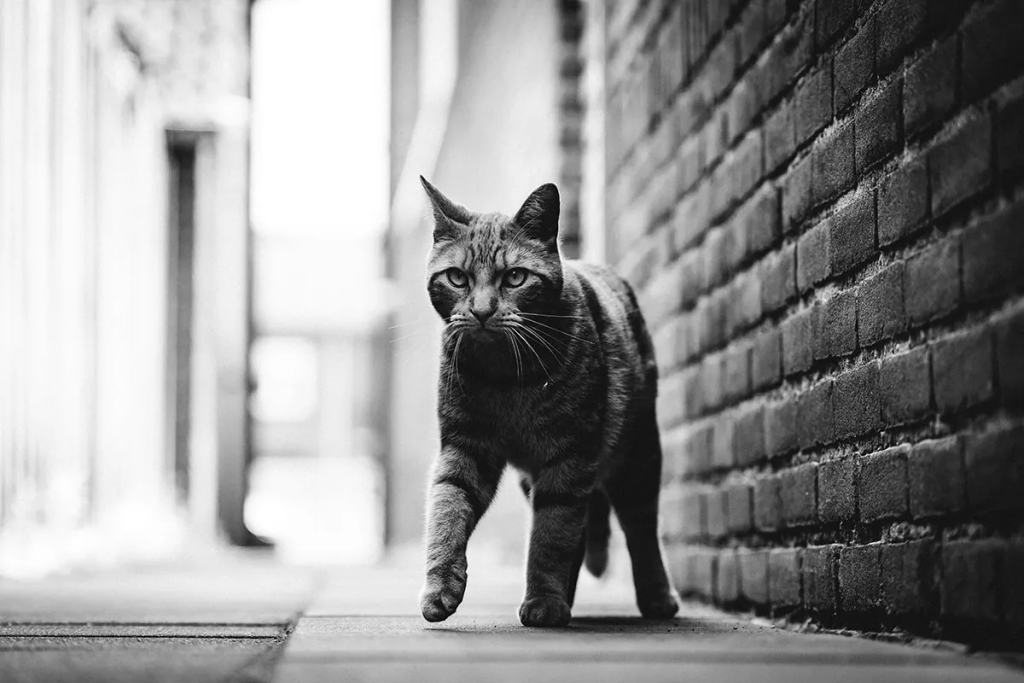Long before color photography was accessible to the average person, photographers captured the world in black and white. Even today, well-known contemporary photographers like Sally Mann and Michael Kenna photograph almost exclusively in black and white. So what are some of the reasons why a photographer chooses black and white over color?
When well done, black and white images can be expressive. Without the distraction of color, the viewer’s attention is naturally drawn to other elements such as texture, contrast, shapes and facial expressions. Portrait and street photographers often prefer black and white images to draw attention to their subject or to convey a specific message and emotion.
If you are new to photography, taking black and white can also be a great way to enhance certain aspects of your photography, such as lighting and composition. Of course, there’s more to strong black-and-white photography than simply converting it to black and white. So if you want to experiment with black and white photography, here are our tips and advice on how to do it right.
What is your reason for taking black and white photographs?
Digital photography makes it easy for us to convert a photo into black and white. But while this can be very convenient, it also means that photographers often don’t give black and white photos the attention they deserve.
Shadows, highlights and textures are very important when taking monochrome images. Making a conscious decision about whether a scene should be rendered in black and white helps you to consider how color or its absence can create distraction or harmony.
Ansel Adams, who was known for his black and white landscapes, said, as you know, “I can get a far greater sense of color from a well planned and executed black and white image than I have ever achieved with color photography”.
So before you start taking pictures, you should ask yourself why you want to depict a particular scene in black and white. Is it to draw attention to the composition? Maybe you want to accentuate light and shadow? Maybe you want to evoke a certain emotion or give the photo a timeless look?”
Essential elements of a black and white photo
There are a number of essential elements that can make or destroy a black and white photo. So if you want to experiment with this kind of photography, you will get a good start by strengthening your skills in the following areas.
Composition
Composition is an important part of every photograph, but it becomes especially important when there is no color. Composing a photograph in a certain way can help to draw attention to your subject, create a sense of depth and guide the viewer’s gaze through the picture. Some well-known composition techniques are the rule of thirds, framing and the use of guide lines.

Light and shadow
When you remove color from an image, you automatically begin to focus more on the direction and amount of light and the shadows it casts. Different types of light create different effects. For example, your images will be paler and less contrasting on an overcast day than on a bright, sunny day. Similarly, the same subject would look very different depending on whether the light comes from behind, from the front or from the side. Lighting can also change the mood of a photo, for example by making it dark and mysterious or bright and cheerful.

Contrast and hue
Despite their lack of color, black and white images contain a range of tones, from pure black to pure white. In fact, the histogram of most modern digital cameras shows 255 shades of gray. A high-contrast image that moves dramatically from dark to light would have fewer gray tones, while a lower-contrast image contains a wider range of gray tones. Neither approach is wrong, but each will produce a different type of image. Against this background, it is important to pay attention to the differences in color tones and their relationship to each other within an image.

Shapes and texture
Black and white images also tend to emphasize shapes and texture, whether it be the laugh lines under the eyes of the viewer, the roughness of a rock, or the geometric shapes used in architecture. So if you want to capture more interesting black and white images, look for lines, patterns, shapes or textures that stand out, draw attention to your subject, cast shadows, or create contrast.

Final considerations for black and white photography
Mastering the essential elements of black and white photography will help you create stronger monochrome images, but there are some other practical considerations you should keep in mind. For example, it’s always a good idea to shoot in RAW format, as this makes it easier to adjust exposure, reduce noise and make your images sharper during post-processing.
It is also important to keep your images simple when shooting in black and white, as this helps to bring out elements such as composition, shapes and texture even more. Although there are exceptions, a black and white image with a single focal point will usually make a more meaningful statement than one with several points of interest.
Finally, keep in mind that a photo that is poorly exposed or simply not very interesting will probably not look much better in black and white. If you consider black and white photography as an art form in its own right, you will get much better results in the long run.






